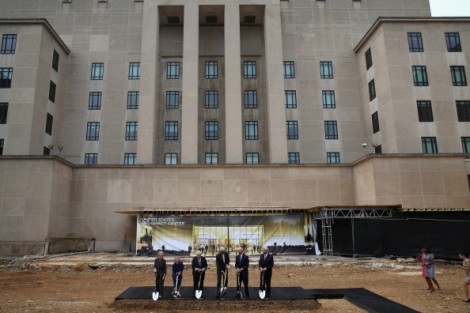State Department Migrates From Leased to Modular Data CenterState Department Migrates From Leased to Modular Data Center
Operations chief happy with results, planning to buy additional modules

The US State Department has traded leased data center space for a modular data center and so far, the division chief who oversees the agency’s operations is happy with the results, preparing to buy two more modules.
The agency moved data from an 11,000-square foot leased facility into an 800-square foot modular data center, Melonie Parker-Hill, division chief for the department’s Enterprise Operations Center, told a conference in Washington, DC, Thursday, according to a report by MeriTalk.
After receiving lots of attention several years ago, modular data centers of the kind State Department has deployed have moved to the background, but according to vendors who sell them, companies like Dell Technologies, Schneider Electric, and Emerson Network Power (soon to be rebranded as Vertiv), demand for them remains healthy.
“We’ve shipped over 250 modular data centers in the last six years,” Jyeh Gan, Dell’s director of data center scalable solutions, told Data Center Knowledge in an interview in June. The space is still very active but it has evolved to where there are several distinct types of modular data centers, he explained.
They can be containerized modules, as in shipping containers or similar boxes with IT racks, power, and cooling infrastructure inside; they can be modules that come together to form a larger data center building; they can also be dedicated power or cooling infrastructure modules.
See also: Microsoft Moves Away from Data Center Containers
The State Department mandated that it start using data centers on government-owned property two years ago, which is what prompted the switch to the modular data center approach, according to the report. The agency had to weigh the need to provide space for people versus space for IT when making the decision, Parker-Hill said.
The move is part of the ongoing government-wide push to consolidate data centers and overhaul the way the federal government procures applications and IT infrastructure to support them. Outsourcing as many services as possible to commercial cloud providers is a big part of this effort.
About the Author
You May Also Like







